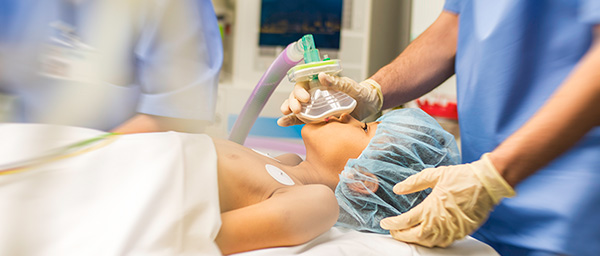Studies have proven that specialty-trained pediatric anesthesiologists make a difference in surgical outcomes, especially in infants and children ages three and under. Our pediatric anesthesiologists perform three major clinical roles: pediatric perioperative care, pediatric diagnostic and interventional procedures, and pediatric pain management services.
Pediatric Perioperative Care
Before, during and after inpatient or outpatient surgery, pediatric anesthesiologists are responsible for the medical management, monitoring, and control of the patient's pain and consciousness to make conditions safe for successful surgery and recovery. The process begins with preoperative screening and continues through surgery and postoperative recovery. Following a procedure, we will attend to your child’s needs, which may include prescribing pain medicine or other therapies to ensure he or she remains comfortable.
Pediatric Diagnostic and Interventional Procedures
As medical technologies have multiplied, so have the number of diagnostic and interventional procedures that can be performed noninvasively. However, these require a cooperative and motionless patient, which can be difficult for young children. Pediatric anesthesiologists set the stage for success by providing care for children undergoing radiological imaging and CT, MRI and PET scanning; endoscopy and gastrointestinal procedures; cardiac catheterization; and other tests and treatments. Their responsibility is to tailor the level of sedation or anesthesia to the patient's needs. The team works to make the experience as comfortable as possible and support the child and family with empathic, state-of-the-art care.
Pediatric Pain Management Services
Our team also prescribes and administers therapies for children experiencing pain due to cancer, burns, or other acute or chronic illnesses or injuries. The pediatric pain service is a subdivision of the adult pain service. We work with our adult pain colleagues to assure the same high level of care for pediatric pain control. We routinely place epidural and spinal anesthetics where indicated for patient care. Epidural catheters may be placed for longer pain control in the post-operative period. These modes can be used in newborns up to adolescents. In addition, with the support of our orthopedic surgical colleagues, we place regional blocks under general anesthesia to assist postoperative pain control for these procedures.


